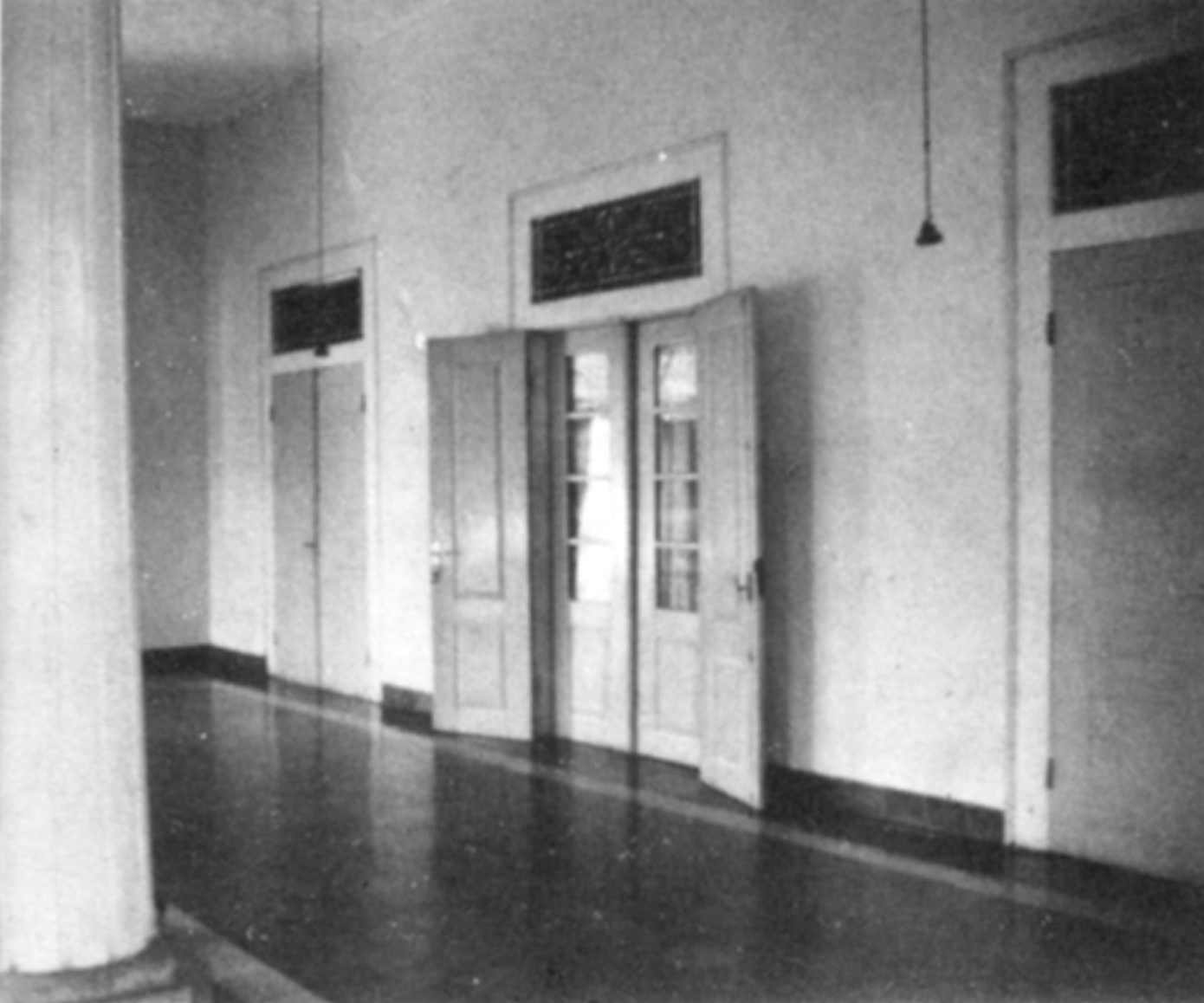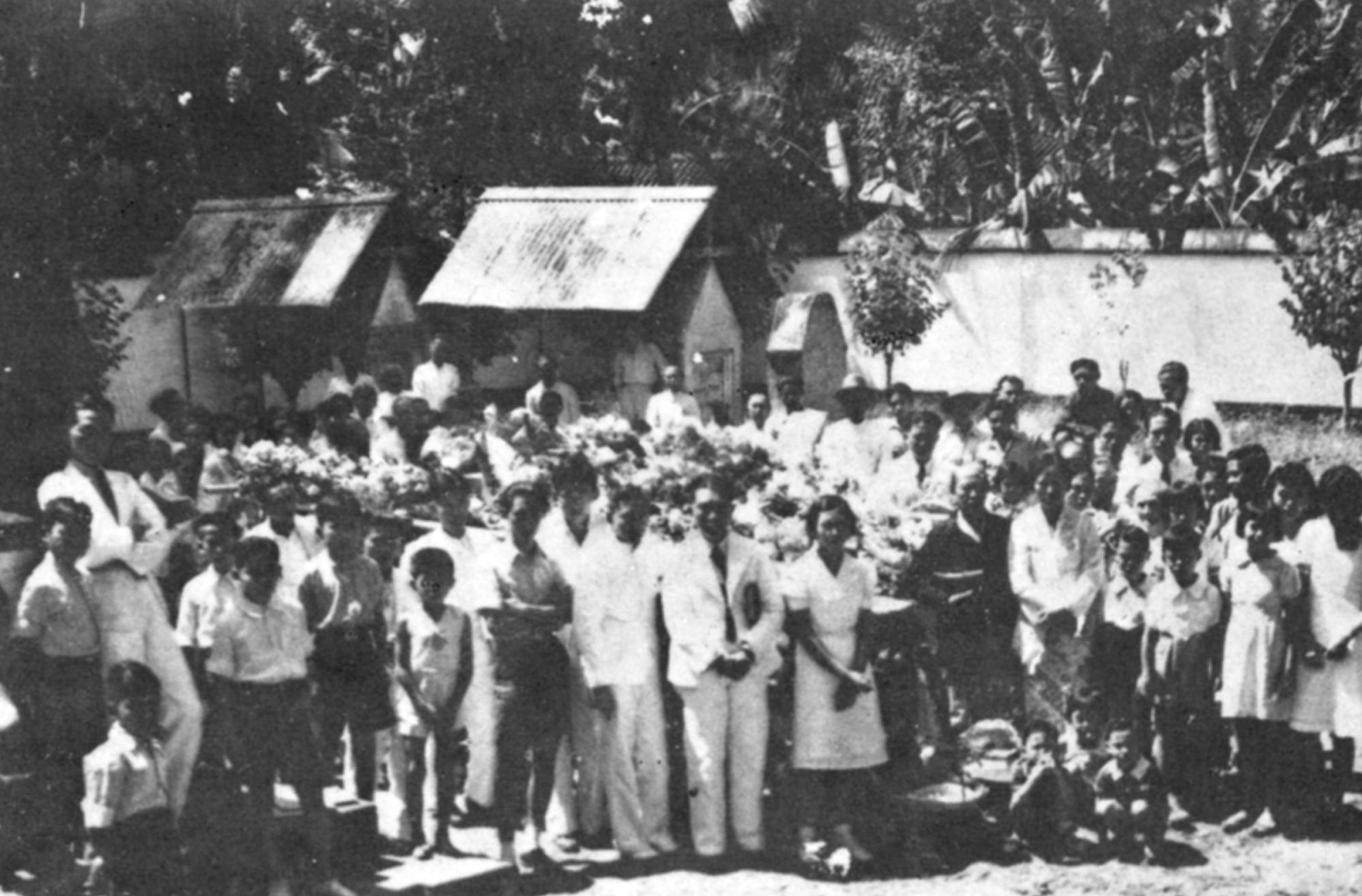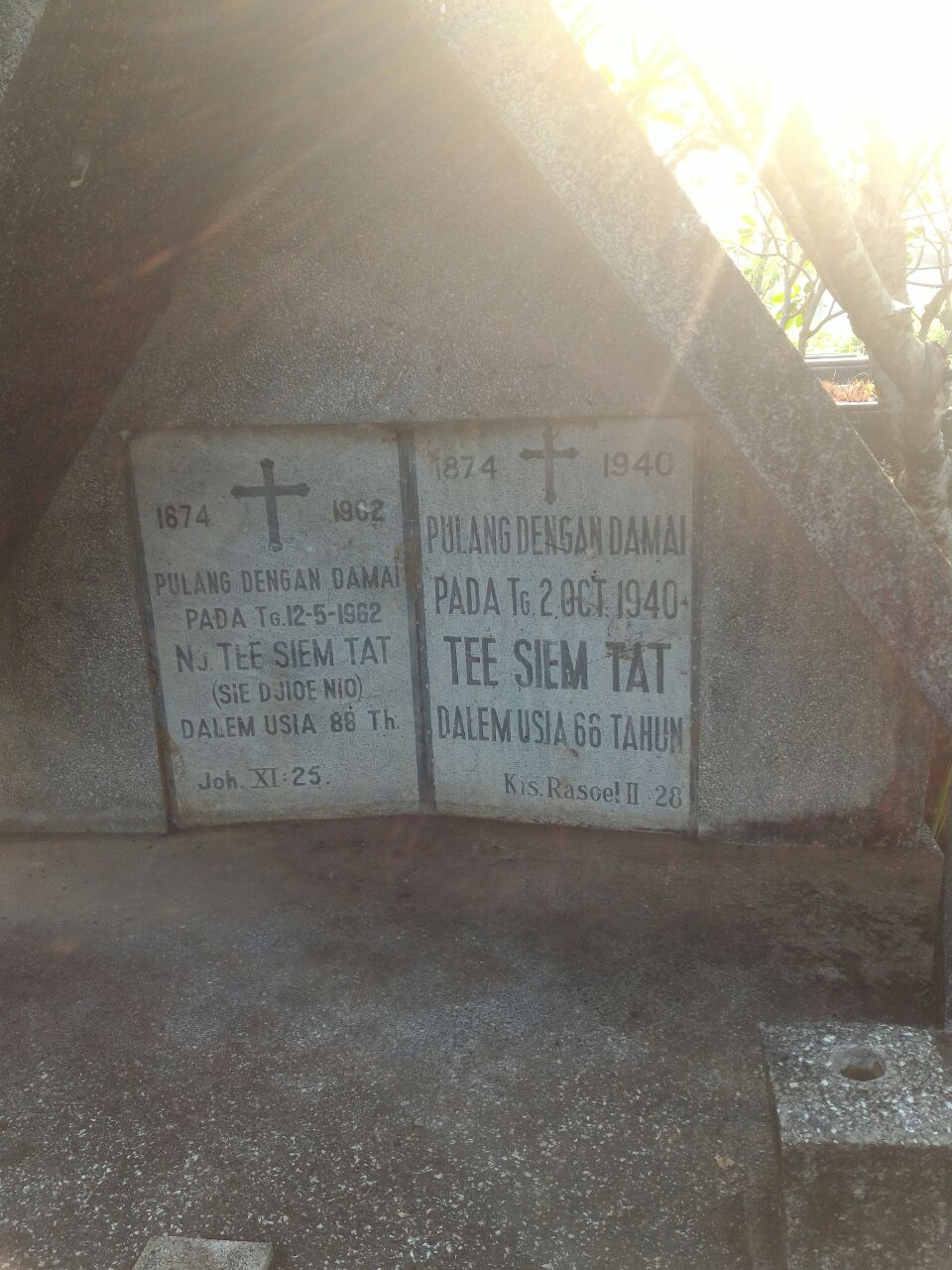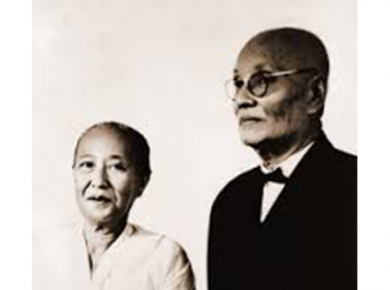Posted: November 8, 2018
Tee Siem Tat (r) and his wife Sie Djoen Nio (l), founders of GKMI. Photo: Courtesy GKMI
Renewal 2027 testimony: historical profile
Renewal 2027 is a 10-year series of events organized by Mennonite World Conference’s Faith and Life Commission to commemorate the 500th anniversary of the beginnings of the Anabaptist movement. This series highlights leaders in the movement from history to the present.
This is the story about how Tee Siem Tat (1872 – 1940) and his wife, Sie Djoen Nio (1875 – 1962) were transformed by the Holy Spirit and founded Gereja Kristen Muria Indonesia (GKMI).
Tee Siem Tat was a successful businessman in Kudus, Central Java. He ran a big co-partnership printing company named Sam Hoo Kongsi. This company progressed very well and served government offices, companies and schools.
Healing
In 1917, Tee Siem Tat became seriously ill. He visited some necromancers and klenteng (Confucian temples) and also tried the modern medication of doctors from Netherland. Nothing worked.
Tee Siem Tat felt desperate.
Sie Djoen Nio remembered the stories she read in a Malay-language Bible she received from an aunt in Yogyakarta. Sie Djoen Nio loved to read the Bible. She was so impressed by Jesus: his sacrifice on the cross, his miracles.
“Can Jesus heal my husband too?” Sie Djoen Nio talked to her husband. They agreed to ask for help as in the Bible. But from whom?
They remembered their uncle Oei Biauw An who knew about Christianity. Oei Biauw An introduced them to Lieutenant Tanuhatu, a Salvation Army officer from Ambon who lived in Rembang. Lieutenant Tanuhatu gladly came to Tee Siem Tat’s house in Kudus many times to teach him about Christianity.
Tee Siem Tat wanted to know Jesus. His faith grew strong. Along with it, his fear and illness were gone.
Tee Siem Tat was healed!

Connected with the Mennonites
Tee Siem Tat read the Bible diligently and earnestly. He attended services at the Salvation Army church in Rembang and invited Lieutenant Tanuhatu to come teach his friends about the Bible.
However, Tee Siem Tat came to disagree with the church’s practice of baptism and their adoption of military codes. He approached the Seventh Day Adventists, but disagreed with their adherence to Old Testament law. Tee Siem Tat then approached Salatiga Mission, but disagreed about child baptism.
Finally, Tee Siem Tat approached the Mennonite mission in Jepara, Pati, and Tayu. He quickly felt that Mennonite teaching fit very well.
So, 6 December 1920, Tee Siem Tat held a baptism for 25 new believers in his house in Kudus. Leonard Silalily preached, Nicolai Thiessen served the baptism, and Johann Hubert prayed for the children. This became the birthday of Muria Christian Church in Indonesia or Gereja Kristen Muria Indonesia (GKMI).
GKMI has spread, from the hillside of Mount Muria (Kudus, Jepara, Bangsri, Welahan, etc.), to Central Java and the Indonesian archipelago.
Today, there are 61 GKMI churches and hundreds of GKMI posts (church plants) in Indonesia.

Evangelism strategy
Tee Siem Tat based his evangelism strategy on Acts 1:8. “But you will receive power when the Holy Spirit comes on you; and you will be
my witnesses in Jerusalem (the closest family: husband/wife, children, son/daughter-in-laws, grandchildren), and in all Judea (extended family) and Samaria, and to the ends of the earth (friends, coworkers, business relations, and those who don’t know about Jesus).”
Even though they were new Christians, Tee Siem Tat and his friends had a huge spirit for spreading the gospel. Using Javanese-Malay language, they were accepted across ethnic boundaries. They were also well known as good people in business and good example in everyday life.

In serving the poor and needy, Tee Siem Tat took his principle from Matthew 10:8, “Freely you have received, freely give”
Last words
On his deathbed, Tee Siem Tat called his sons, Tee Yan Poen and Tee Yan Siang, and his son-in-law, Tan King Ien. To them, Tee Siem Tat spoke his last words: “Djagalah anak kambing koe” (“Tend my lambs,” John 21:15 in Old Bahasa). His grandson, Rev. Herman Tan, believes his last words were to ask his children, his son/daughter-in-law, grandchildren, and the generations to come that GKMI would stay faithful to a Doopsgezind (Mennonite) perspective.
—Paul Gunawan is a senior writer and editor from GKMI. Translation from Bahasa Indonesian by Mark Ryan.






Join the Conversation on Social Media
FacebookTwitterInstagramFlickrYouTube